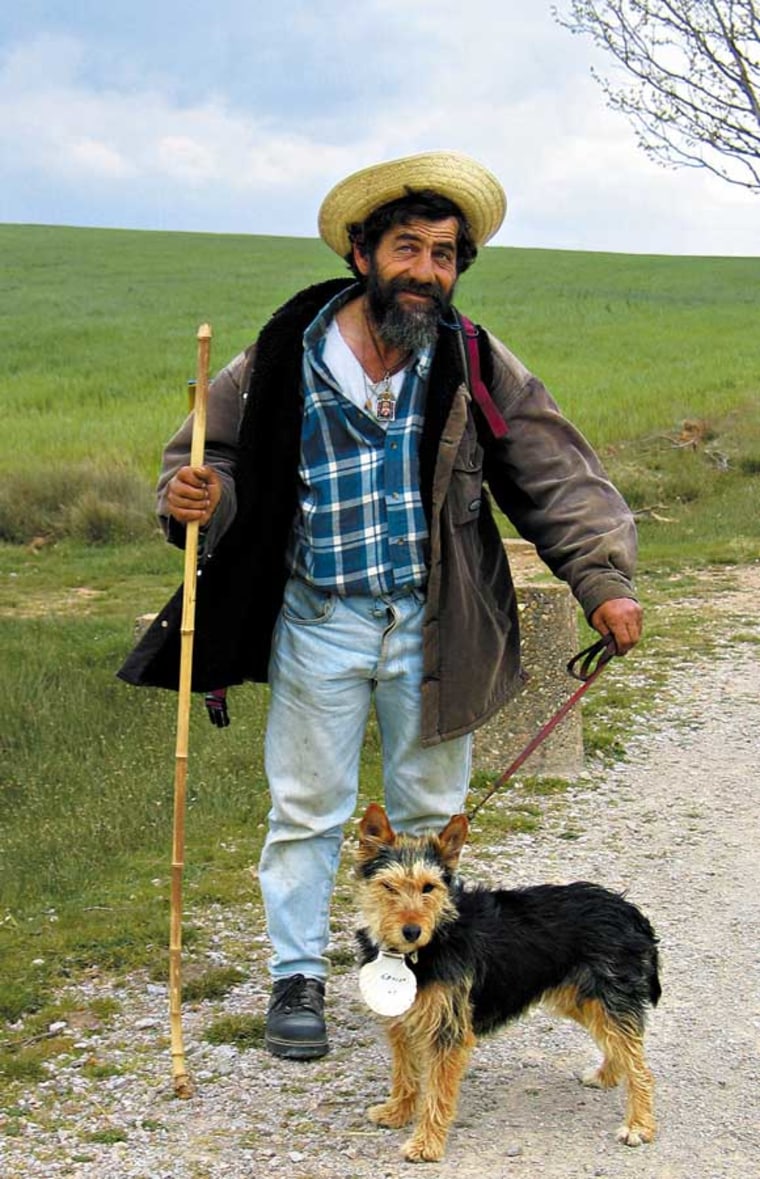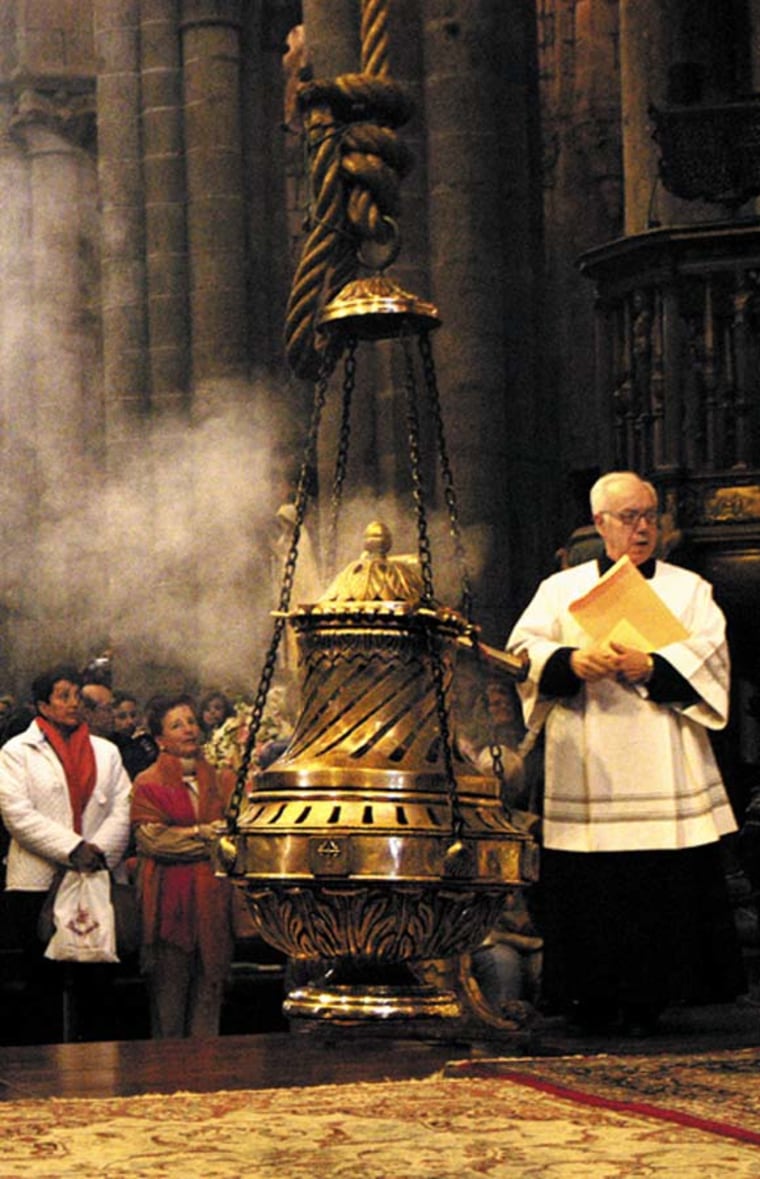It wasn’t until I stepped off the train in St. Jean, at the foot of the snowy Pyrenees, that I was hit with the reality of a 500-mile pilgrimage to Santiago. The route had had a John Lennon, just-turn-left-at-Greenland simplicity when spread across my breakfast table in the States—first come down from France and then hang a right across the Spanish regions of Navarra, La Rioja, Castilla y León, and Galicia. Now that I was there, it became obvious that my Camino daydreams were logistically threadbare. Would it be easy to find places to sleep? Did I have the appropriate gear? Did I really want to walk for a month?
At St. Jean, a cosmic base camp crowded with chalets, an old man familiar with confused pilgrims ushered me to the albergue (shelter), where I was shown to a bunk, and my pilgrim’s passport was stamped. The next day, Easter, as I traversed the Pyrenees—atop peaks and through valleys, where everyone was dressed in red, white, and green Basque costumes and marched in the streets as girls twirled in sync to oompah music—I remembered what a Dutchman told me when I nervously asked directions into the mountains. “Relax, you are a peregrino,” he said, using the Spanish word for pilgrim and playing with the beads in his long, gray beard. “The journey begins with the first step.” He clapped me on the shoulder and gave me the pilgrim’s salutation: “Buen Camino.”

I felt a greater sense of belonging with each stage of hiking. When I reached the day’s goal and laid my gear out on my bed, I was greeted by faces that were becoming more and more familiar. And when I sat down to share wine and food, I was with old friends. “People on the Camino are from all over,” said Ismael Herrero, a pilgrim from Madrid, as we descended through lush fields in Navarra, where white blossoms poured over rickety fences and bells chimed in the distance. “The Camino is less a path in Spain than an international cultural experience suspended in space.”
Even though my mind felt like part of a community, my body was unsure. Somewhere outside Pamplona, my feet began throbbing and I dropped my pack in the first place possible—Bar Ciudadela. The owner, Fernando, served me a snifter of pacharán brandy (sloe berries marinated in aniseed liqueur). As he spoke, men and women ambled in and out of the stone labyrinth of shops and restaurants in the Parte Vieja. When others in the bar heard I was a pilgrim, they offered advice. Go slow. Rest often. Drink a lot of wine.
Back on the Camino, I took that advice at the Bodegas Irache, a vineyard famous for its Fuente del Vino (wine fountain), where an inscription reads: “Peregrino, if you want to reach Santiago with strength and vitality, have a drink of this great wine and toast to happiness.” I filled my Nalgene bottle. Irache, I learned, gives pilgrims about 35,000 liters of wine each year.
I sensed this journey had an end while walking under the 13th-century Gothic cathedral that once marked León, the last major town before Galicia, as the capital of Christian Spain. It occurred to me—first as I sat in a pew in the kaleidoscopic, stained glass nave and then as I shared drinks with pilgrims in the packed bars of León’s raucous Barrio Humedo (Wet Quarter)—that after 20 days my strength could almost keep up with my curiosity. Between boisterous toasts of “Salud!” I started to reminisce prematurely. I had come to see Spain, but before I knew it, I was part of Spain.
Like most people I met on the way, my reasons for the pilgrimage weren’t religious—not exactly. But when I reached Santiago I hugged the sculpture of St. James, which presides over the main altar in the three-tiered Romanesque cathedral. And I got choked up as Tony, a macho Sicilian, cried during the pilgrims’ mass. It might have been the incense soaring above the congregation in the world’s largest censer, or the sight of those with whom I’d shared meals, stood breathlessly on mountaintops, and bemoaned rain-soaked days, but I felt empty—like it was the end of the best summer camp ever. My questions in Santiago were as nostalgic as the ones in St. Jean had been naïve: When will I take another month to walk silently through waving grain in Navarra? When will I reflect while gazing across Castilla y León’s stark expanses? When will I willingly trudge over Galicia in the rain and snow? Will I ever take another “vacation” where the trip is as important as the destination?
Lao-tzu said that a journey of a thousand miles begins with one step. By the time I reached the Camino’s end, a million steps after I’d started, it was clear that my own journey had just begun.
Continued:
